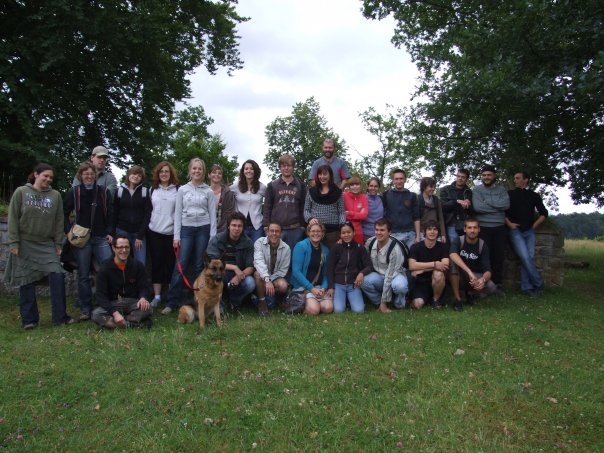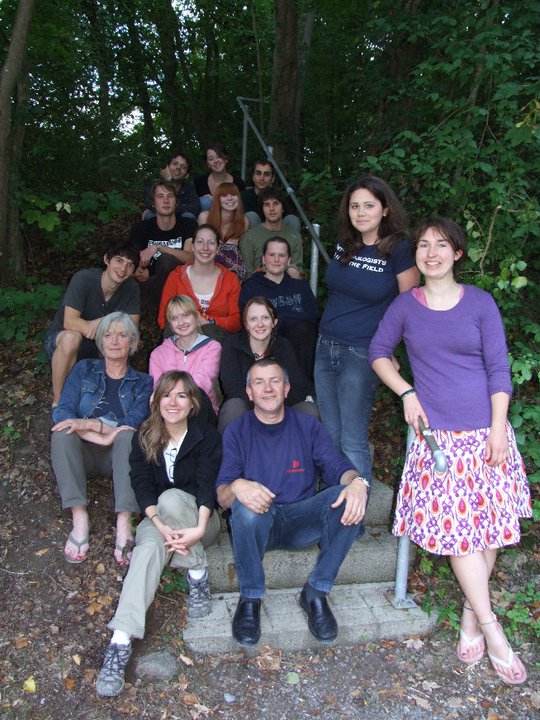Belgium and Archaeology
In 2007 after returning from the Cook Islands I had about 5 days before I took off on my next adventure. I headed to Europe to work on an archaeological dig at Scladina cave in Belgium.
I travelled first to London and gave myself a two-day stopover to wander around and be a tourist and see some theatre.
Then I flew to Brussels airport. I navigated the train from Brussels to Sclyan the sleepy town where the site is located. When I got off the train I looked at my directions but this was the first time I was travelling by myself and couldn’t help but be worried I would do it wrong.
I crossed the bridge and turned left like instructed. Finally started to see signs for the site and they were all pointing uphill. It is a pleasant walk normally but with a backpack and a carry-on suitcase it was not something I was excited about. I managed to find the gate to the site.
When I walked through the gate there was a large building the was the museum, lab, and indoor kitchen area. Others had arrived earlier and set up a tent camp because we would live on site. I met with my instructor and she introduced me to all the other people at the site. Some were from my university (6 of us) and there were about 20 from the University of Liege. Then there were the workers for the site. It was overwhelming at first.
That changed with time though. I learned the work quickly. We were working in a cave to dig and document a known Neanderthal occupation. Partial remains of a child had been found at the site. Also, there were stone tools found and bones from other animals. The dates of the site ran from 80,000 years at the top of the cave to about 140,000 years at the current bottom of the cave.
The cave has a grid system 1m x 1m that we worked in. We removed soil from the grid slowly trying to keep any items in their place so we could document exactly where they were found. There are very distinct layers of soil in the cave. Different materials were unique to different layers so you had to know exactly what you were looking at before removing anything. When we had to remove a bucket of soil we took it up to the washing station to wash away the soil and see if any of the rocks were tools or bones we had missed.
You also had time to work in the lab documenting and cataloguing the materials that came from that cave. There was much less pressure in the lab.
The digging was the easy part. You had to be careful though and try not to find something in your wash pan that really should have been found in your square for documentation, like teeth and stone tools.
We had lunch breaks where we all took turns cooking or washing. After work, we all lived on-site together. The locals returned home only on the weekend. At night we all sat and talked and played games. The site had a big area with 3 fridges but only one for food. The other two were for beer. Cheap beers, weak beers, strong beers, the special monk made Trappist beers. During the week we would keep tally of what we drank and pay it at the end of the week. At the end of the week, they would attach a cart to the end of a motorcycle and take the empties for recycling.
I had a great time and met great people. The local students became friends I still stay in touch with even over 10 years later. We made fools of ourselves and we worked really hard.
On the weekend we would go to different places with the head of the excavation; Brussels, Liege, Namur, little local places to explore and share meals. One weekend there was a mid-evil festival at the Namur Citadel. We went with two of the workers from the site, they were all dressed up in period costumes. We would drink mead, watch jousting and archery, shop for traditionally-made items. It was great fun. I had so much fun that I returned for two more seasons in 2008 and 2009.
I worked with some amazing people during my time in Scladina. It is an amazing place that I will forever be thankful for the chance to work with and live with these amazing people.



























